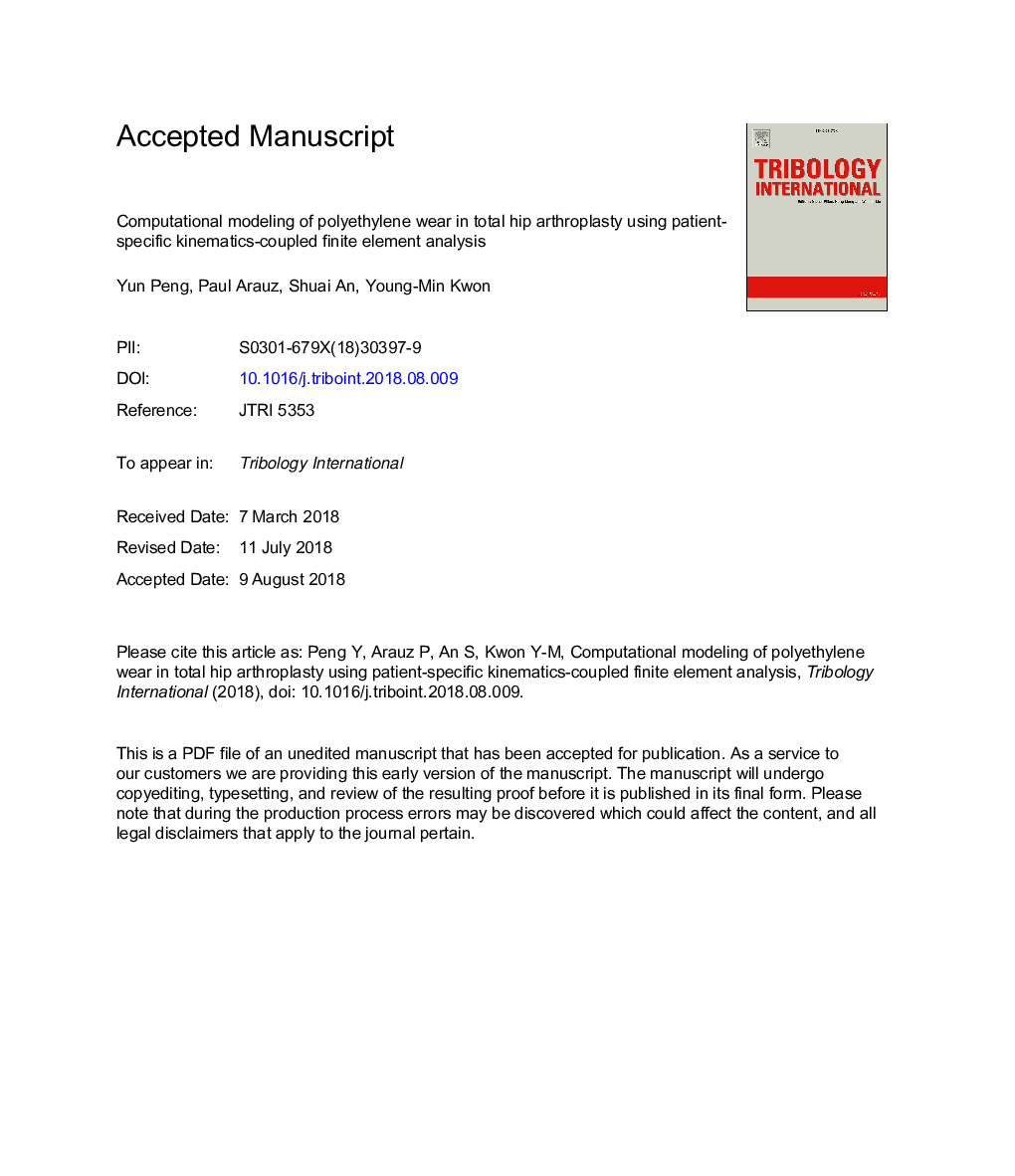| Article ID | Journal | Published Year | Pages | File Type |
|---|---|---|---|---|
| 9952534 | Tribology International | 2019 | 28 Pages |
Abstract
Computational modeling of polyethylene wear based on patient-specific gait kinematics and component orientation remains lacking. This study aimed to quantify the polyethylene wear among 48 total hip arthroplasty (THA) using patient-specific data through a computational model incorporating the cross-shear effect. Strong patient variations were observed in volumetric wear rate (54.1â¯Â±â¯13.9â¯mm3/year) and linear wear rate (0.20â¯Â±â¯0.08â¯mm/year). Regression analysis demonstrated that axial plane rotation, in light of its influence on cross-shear effect, plays an important role in polyethylene wear. The computational model based on patient-specific gait kinematics and component orientation provides a useful tool to investigate the in-vivo polyethylene wear.
Related Topics
Physical Sciences and Engineering
Chemical Engineering
Colloid and Surface Chemistry
Authors
Yun Peng, Paul Arauz, Shuai An, Young-Min Kwon,
